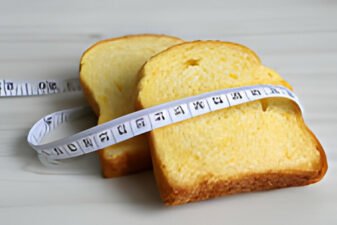Invented in 1981 as a treatment tool for diabetes to help diabetic patients maintain stable blood sugar, the Glycemic Index (GI) has now replaced the older method of classifying carbohydrates according to their “simple” or “complex” chemical structure. Although calories, saturated fat and general nutritional considerations (as well as exercise) are important factors in any healthy weight loss plan, the glycemic index (along with Glycemic Load) has become the new standard for healthy carbohydrates.
Why Is A GI Diet Best For Your Health and Weight?
In a nutshell, the GI Diet has all the advantages of lower-carb diets and lower-fat diets, but none of the health risks.
Low-carb weight loss plans tell us that carbohydrate screws up our metabolic system by raising our blood glucose levels thus forcing us to produce extra insulin, which over time can lead to pre-diabetes or full-blown type 2 diabetes, obesity and other symptoms of insulin resistance syndrome. As a result, these carb-restricted eating plans tell us to eat more protein and fat. Unfortunately, not only is this type of eating very boring, it’s not healthy either. It’s difficult to eat more protein without consuming more animal fat, and as any dietitian or nutritionist will tell you, animal fat is high in saturated fat – which is a prime cause of atherosclerosis heart disease. Also, carbohydrates contain a range of important vitamins and minerals, so reducing your carb intake means reducing the nutritional content of your diet. This is why low-carb dieters were forced to take vitamin supplements. It’s true that low carb weight loss plans, like Dr Atkins New Diet Revolution and Dr Agatston’s South Beach Diet did cause rapid initial weight loss, but the extra weight loss was water – not body fat. And the moment dieters started eating carbs again, the weight returned. Thus the low-carbohydrate method of losing weight is neither healthy nor effective in treating overweight.
Low-fat weight loss plans are no better for health or weight reduction, unless prescribed for patients with raised cholesterol. Food without a reasonable amount of fat is boring, so diet-compliance rates for low-fat diets are typically quite low. In addition, new research shows that – while saturated fat remains very unhealthy – certain types of polyunsaturated fat (essential fatty acids especially omega-3) actually boost health and weight loss. Monounsaturated fat (eg. olive oil) is also believed to be beneficial for our health. But the most important discovery is that trans-fats (found in many baked products like cookies) are just as unhealthy as saturated fat. So many of the refined carbs which low-fat dieters ate were even more unhealthy that fatty meat and cheese.
The GI Diet is a major step forward in dietary health and weight reduction. First, unlike low-carb diets, it doesn’t focus on the quantity of carbs you can eat – instead, it focuses on carb-quality. GI diets recommend we avoid refined carb foods like: white-flour bread-snacks, processed cereals and sugary soft drinks, instant rice/pasta, and cookies. Instead, we should eat unrefined carbs, such as whole grains like oats, basmati or brown rice, whole grain bread and bread-snacks. These wholegrain carbohydrates are rich in minerals, vitamins and fiber and take longer to digest than refined carbs – which means they keep us satisfied for longer. Also, by avoiding refined carbs we will reduce our intake of trans-fats which (like saturates) are believed to have a serious adverse health effects on our arteries.
For more information about GI Diets, see the following list of resources for answers to questions like: how is carbohydrate digested, what effect do carbs have on our blood glucose levels and insulin levels, what is the connection between carbohydrate and insulin insensitivity, what exactly is the Glycemic Index and Glycemic Load, why do some foods have high GI values, how can we reduce the GI value of a meal, how is the GI rating of a food measured, which type of diet is best: low-GI or low carb, how much carbohydrate should we consume… and many more.
How the Body Uses Its Energy Sources
Guide to Carbohydrates
How Carbs Are Digested
How Carbohydrate Affects Blood Sugar
How Carbohydrate Affects Insulin
Health Risks of Excessive Insulin
Low Carb Eating Plans
Guide to Glycemic Index (GI)
More Details About GI
How GI is Measured
What Determines GI Value of Carb-Rich Foods
Guide to Glycemic Load
GI Values of Meals
How to Reduce GI Value of Meals
Low GI Foods
How Much Carbohydrate Do We Need in Our Diet
Which is Best: Low Carb or Low GI Diet
Health Benefits of Low GI Diets
Nutritional Facts About Carbohydrates
See the following list of resources for information about how modern carbs compare with those in traditional diets, what are “good” carbs, how much sugar should you eat, the carbohydrate content of popular foods, plus advice about healthy protein eating habits.
Carbs and Our Modern Diet
Development of Carbs
Carbs in Modern Diet
Fats in Modern Diet
Evolution & Modern Diet
Guide to Healthy Diet
Healthy Eating
Best Foods
Good Carbs
Good Protein
Good Fats
Advice About Sugar
Dietary Fiber
Fiber and Weight
Protein in Food
Carbs in Food and Other Diet Information










